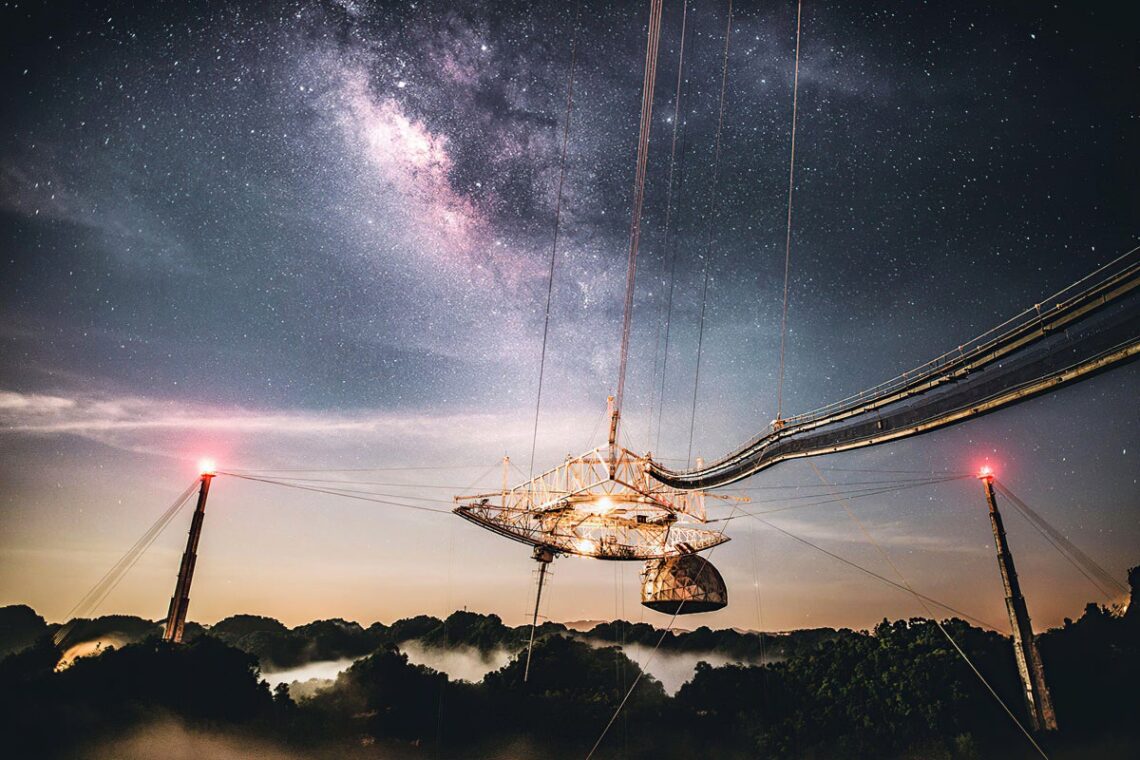A half-century ago humanity sent its first postcard to the stars, carried by a narrow beam of radio waves.
It was November 16, 1974—a turbulent time on planet Earth. The cold war was reaching its crescendo, and the world economy was still sputtering from a Middle East oil embargo that was imposed the previous year. The U.S. had retreated from its crewed forays to the moon but was still fighting in Vietnam, and the resignation of scandal-plagued President Richard Nixon was still reverberating. The Beatles had effectively disbanded earlier yet would officially do so before year’s end. (John Lennon’s solo single—“Whatever Gets You thru the Night”—topped the U.S. charts that very day.)
Against that dark background, this first-ever interstellar transmission was both a literal and figurative ray of light. Astronomers had already started eavesdropping on the heavens, hopefully awaiting murmurs from beyond that would break our seeming cosmic solitude. But this was something different—an intentional summons, perhaps an invitation for communion with hypothetical beings among the stars. Sent using a powerful radio transmitter at the Arecibo Observatory in Puerto Rico, it signaled the start of an age that is still unfolding, in which our rapidly changing technological civilization confronts an uncertain fate beneath a silent sky and grapples with how to present itself.
On supporting science journalism
If you’re enjoying this article, consider supporting our award-winning journalism by subscribing. By purchasing a subscription you are helping to ensure the future of impactful stories about the discoveries and ideas shaping our world today.
Composed in binary code—a string of 1’s and 0’s—what’s now known as the “Arecibo message” has become an icon of the 20th-century space age in the 50 years since it left Earth. You’ve almost certainly seen it at some point, even if you didn’t recognize it for what it was. Arrange its digits in a grid with the…
Read the full article here

